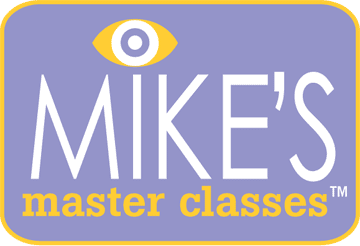An interesting premise for a video, this masterclass covers a deceptively simple concept. It’s just about harmonizing melodies in thirds. How difficult could that be you might think! Some may even feel that they know this but might be surprised how much value this video brings.
The video is divided into 8 units, along with 2 bonus videos. One bonus video features a duet between Howard Alden and Mike’s Master Classes founder, Mike Gellar performing Out of Nowhere and another video is a Behind The Scenes video.
Going into the main body of the master class, Howard Alden begins by playing 3 different solo versions of Out of nowhere. The first one is harmonized with full chords. Then he demonstrates a single note version of the melody. The third one has a double stop version of the melody, which is the focus of this master class. Howards shows how the melody harmonized in thirds makes the experience more complete and interesting.
Going into his take of Out of Nowhere, he explains how he would harmonize each phrase during the 1-chorus example (notated with fingerings and tablature). In my opinion, the most value that a student can gain from this video is not just the theoretical aspect but to learn the logic behind Howard’s fingering choices. This alone is worth the price of admission as you get to save years of experimenting as you get to stand on the shoulders of giants (in this case, Howard Alden!)
In the second unit, Howard demonstrates the entire 1-chorus version followed by an exercise using the diminished scale using specific fingerings to help develop your thirds technique with all your fretting hand fingers. At this point, I started realising how lucky we are to be able to learn from Howard. His wealth of experience shines through the sheer economy of knowledge that he is able to impart in less than 15 minutes through this video.
In the third unit, Howard demonstrates a whole tone exercise in a similar vein.
In the fourth unit, Howard goes back into his solo version of Out of Nowhere beginning with the written arrangement for the first chorus before embarking on an improvised double stop solo over the changes. This is a real highlight for me as I could really see Howard mastery in developing the phrases, first with double stops then including some single note lines with call and answers with double stops and going back to the melody.
In the fifth unit, Howard explains when to use the third harmonization so that it’s musical.
In the sixth unit, Howard shows how the same concept could be used for other songs by playing Blue Monk and If I Had You. This part was rather short and not notated but with the high quality video, you could slow it down and learn the additional examples.
In the seventh unit, Howard shares a written etude over the changes of All of Me. This etude contains some great usable ideas that are applicable to other tunes as well.
In the last section, a slower example over All of Me is featured to close the main part of the masterclass.
Going into the bonus video section, we get to hear a nice duet version of Out of Nowhere. By itself it’s interesting but within the context of the video, I felt I got more out of the performance as I was paying close attention to Howard’s use of double stop as well as other musical devices like walking bass lines and rhythmic chordal stabs.
The second bonus video – a behind the scenes clip was a nice touch. It was cool seeing some candid moments outside of the actual content. I kind of liked this and feel that it’s a good addition to the master class. Sometimes, instructional videos can feel a bit dry and detached. Seeing the human side of these great virtuosos is a wonderful thing.
All in all, this video is a good one. The greatest strength to me is that it’s digestible. Some videos I’ve bought over the years contain SO MUCH material that I may watch the entire video just once, I rarely practice everything in the video. With this new one from Howard, I can see myself working on the exercises, etudes and the arrangement of Out of Nowhere. It’s a lot of work but still achievable.
Intermediate and experienced players will benefit from the content and can get even more from some of improvised examples. Beginners should find the notated exercises to be challenging but helpful for technique, fretboard understanding and ear training.
See Howard Alden’s Class on Harmonizing Melody Lines Here
Pros: Written examples in standard notation and tab (and fingerings). Great high quality video with close-ups and well edited.
Cons: None.
TLDR: If you enjoy Howard’s playing, this video is a good entry point into his style. For me, the PDF files are extremely helpful in digesting the concepts along with his fingering suggestions. If you’re like me and like having written material to study during (and away) from the video, this master class is for you.



0 responses on "Video Review: Howard Alden’s Techniques for Harmonizing Melodies with Thirds"